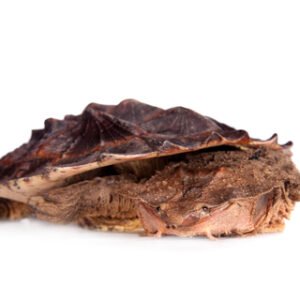Habitat and Distribution of the Florida Snapping Turtle
The Florida snapping turtle (Chelydra serpentina osceola) is predominantly found in a variety of freshwater habitats, which play a significant role in its survival and development. These turtles typically inhabit lakes, rivers, swamps, and marshes, reflecting a preference for slow-moving or still water bodies. The abundance of aquatic vegetation in these environments offers not only shelter but also foraging opportunities, essential for their omnivorous diet. In addition to these habitats, the Florida snapping turtle is often observed in brackish waters, especially near the coastal regions, although freshwater environments remain its primary territory.
Geographically, the distribution of the Florida snapping turtle is largely concentrated throughout the state of Florida, particularly in the northern and central parts. Regions such as the Everglades and the Apalachicola River are well-known hotspots where these turtles thrive. However, they can also be found in urban areas where suitable habitats are available. This adaptability to various environments contributes to their resilience as a species. Seasonal migrations in search of food and nesting sites are common, revealing their responsiveness to changes in habitat availability.
Behavior and Lifestyle of the Florida Snapping Turtle
The Florida snapping turtle (Chelydra serpentina osceola) exhibits a range of interesting behaviors and lifestyle patterns that are essential for its survival in the wild. As carnivorous reptiles, they have a reputation for being opportunistic hunters. Their diet primarily consists of fish, amphibians, crustaceans, and even small mammals. Utilizing their strong jaws, these turtles capture prey with remarkable agility. They are known to ambush their food, lying in wait at the bottom of water bodies or hiding among vegetation, making them adept hunters in their natural habitat.
Mating rituals among the Florida snapping turtles are quite fascinating. Typically, breeding occurs in the spring and summer months. During courtship, males engage in head-bobbing displays and gentle nudging to attract females. Once fertilization occurs, females seek out a suitable nesting site, often digging holes in sandy areas, where they lay between 20 to 30 eggs. These nests are typically situated near water sources, ensuring the hatchlings have immediate access to their aquatic environment upon emergence.
In terms of social behavior, Florida snapping turtles are primarily solitary creatures. While they may occasionally encounter other turtles, interactions tend to be limited. However, during mating season, multiple males may compete for the attention of a single female. Their adaptability is evident in their capacity to thrive both in freshwater environments like ponds and rivers and occasionally in brackish water. With a well-developed shell for protection and a stealthy approach to hunting, these turtles exhibit survival strategies that have enabled them to persist in varying ecosystems.
Overall, the Florida snapping turtle is a resilient species that demonstrates unique behaviors, from its hunting techniques to its mating rituals, essential for its continuation in the wild.





